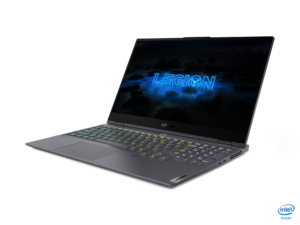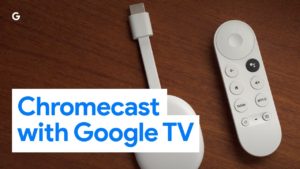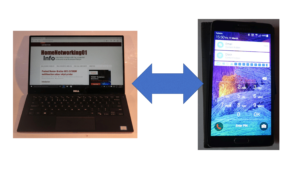Article

It will be hard for the traditional voice telephone service to die out due to it evolving
Market Snapshot: Voice as a Lifeline and the Transformation of Home Telephony | Parks Associates (name and address required to download)
My Comments
It will be hard for the traditional landline telephone service to disappear from our lives altogether. This is even though an increasing number of households are using mobile phones for their voice communications. The Parks Associates report was written with the past year in mind thanks to the COVID-19 coronavirus plague having most of us around the world housebound.
At the moment, most telcos and ISPs are offering the traditional landline telephone service as part of one or more multiple-play telecommunications packages. These packages encompass a combination of services including:
- landline telephone service,
- fixed broadband Internet,
- multichannel pay TV,
- mobile telephone service
- mobile broadband Internet
Often the landline telephony service is anchored to a “cheap-to-call-the-nation” tariff plan where you can make many calls and talk for a long time on these calls per month to home and business telephone numbers within your country. A lot of these plans even offer unlimited phone calls to regular home and business numbers at least for the cost of the subscription fee.
There are also some of these plans offering the ability to call mobile phones based within your country for dirt cheap prices or as unlimited-calling destinations. The plans will even have international calling packages that make it cheap to call the world, especially landlines and, perhaps, mobile numbers in the popular countries, from your landline service.
How is the landline telephone service now delivered?
Increasingly such services are being delivered as a hybrid VoIP service rather than the traditional circuit-switched voice telephony service associated with the Plain Old Telephone Service.

An increasing number of routers offered by telcos and ISPs support Fixed Line IP out of the box, serving as a VoIP DECT base station and / or VoIP analogue-telephone adaptor
The first method, typically used with packet-only network transports like DOCSIS-based cable modems, fibre-to-the-premises fibre optic, fibre-to-the-building fibre-optic with Ethernet cabling to the premises, fixed-wireless or even naked/dry-loop DSL is known as Fixed Line IP. Here you have a traditional telephone connected to an analogue-telephony-adaptor, a DECT-based cordless telephone using an IP-driven DECT base station or a dedicated VoIP telephone connected to your home network via Wi-Fi or Ethernet. The analogue-telephony adaptor and/or IP-based DECT base station will be likely to be integrated in your home network router especially if it comes from your telco or ISP.
This setup may also include the use of a “softphone” app that runs on your regular computer or smartphone. Here, this software emulates an IP-based fixed-line telephone on one of these computing devices so you can take calls from your fixed-line service with your smartphone, tablet or laptop computer. Such apps are used with business telephony setups but are being considered of value for small-business and residential telephony services provided using Fixed Line IP.
Infact the Fixed Line IP service is now considered the way to deliver traditional voice telephony due to it being media-agnostic. As well, it plays in to telecommunications platforms where infrastructure and service are provided by different entities like what we are seeing with the UK’s Openreach, Australia’s NBN and New Zealand’s Chorus; along with the rise of independent infrastructure providers providing competitive wholesale telecommunications service.

Newer smartphones are offering Wi-Fi calling, delivering cellular mobile telephony via any Wi-Fi network you are connected to with them
The other method is to use Wi-Fi Calling where a cellular telephony service is provided by Wi-Fi through your home or other network. This is equivalent to a traditional cellular telephony service with your mobile number ringing on your Wi-Fi-Calling enabled smartphone no matter whether it is connected via Wi-Fi or the mobile network. Recent iterations of iOS and Android provide native support for Wi-Fi calling.
Use cases
The landline telephone service and voice telephony in general is being used as a way to keep in touch with family and friends and to avoid social isolation. This especially appeals to communities whose constituents haven’t adapted to mobile telephone or online services, something that is typical of some religious communities and schools.
Working or running a business from home can also appeal to some users as a reason to maintain a traditional fixed telephony service. This may be in conjunction to maintaining a mobile telephony service that is kept for calling while away from home. As well, most tax codes will accept the establishment and maintenance of telecommunications services associated with working or running a business as legitimately-deductable business expenses.
Voice telephony is being seen as a key modality for providing any sort of telehealth services. This reduces frustration associated with establishing and running a videocall. It is also more familiar for people who need medical help.
Older people are the key user groups who value the traditional fixed telephone, Here, it is a very familiar service for them as these services became ubiquitous in everyone’s homes since the end of World War II. As well, the landline telephone service is considered by the national emergency numbers like 911 in the USA, 999 in the UK or 000 in Australia as a sure-fire link to emergency help through these numbers. This is typically due to setups like mapping landline numbers that call emergency numbers to physical addresses.
Increasingly the concept of unified communication services is being exposed to small business and home users with all the features associated with big-business telephony. This has been a trend with the history of telecommunications evolved from business use to home use as associated products and services became cheaper to buy and operate. The provision of unified communication services to this user class is being maintained as part of differentiating residential and small-business telecommunications packages in a highly competitive market.
As well, the traditional landline service is still seen as a lifeline. This is more so with elderly people, rural residents and low-income households due to it being part of the universal telephone service.
Why is the landline still relevant?
The landline telephone service is still seen as relevant due to a significant installed user base. As I have said before this is facilitated with service upgrades that are part of multi-play service packages.
There is a familiarity associated with using a landline telephone service especially for people who have grown up with this kind of telephone service. Here, it underscores a simple user experience whether making or taking phone calls.
The landline telephone service is still affordable to use which appeals to low-income communities. This is due to it being part of the standard definition of a universal telephone service and the fact that it is also offered as a very cheap service as part of the multiple-play service packages.
Where a traditional wired telephone is used as part of this service, a landline telephone service’s quality-of-service is independent of your building’s structure. Here, you are not finding that double-brick, sandstone or cinder block walls are interfering with your phone service’s reception. It also yields consistent voice quality which isn’t dependent on wireless signals.
The landline phone service can effectively serve in a load-balancing capacity for voice traffic where it is used alongside mobile telephony services. Typically this would be achieved by a person ringing someone’s landline phone number when their attempt to ring someone’s mobile number fails to an “out-of-range” or “busy” condition. This may he due to situations like a dead battery in the user’s mobile phone.
It is still preferred to deliver life-critical communications services through the landline telephone service due to it being related to physical addresses. Fixed-line IP services and cordless telephones will face trouble with devices that are dependent on continual power supply available at the customer’s premises.
The future of the traditional landline telephone service
A direction that will come about for the traditional landline phone service is to move towards device-agnostic phone services and the popularisation of big-business-style telephony services in the home and small business. What I mean is that it doesn’t matter whether the endpoint device for these services is a phone associated with a fixed-line telephony service or a mobile phone associated with a cellular telephony service. This will be due to varying factors like people working or running businesses and organisations from home; independently-managed phone services, and the like.
It will also include the ability for a user to maintain different telephone numbers for different purposes with each number ringing on whatever devices the user chooses to have them ring on with a distinct ringtone or ring cadence and in a chosen order. It is rather than having a phone number for a class of phone service ringing on a particular endpoint device. The classic setup example would be to keep a public-facing “business” phone number and a separate “personal” number given out only to family and friends.
The setups could allow a number to simultaneously ring on selected devices like a cordless phone and a mobile phone, or have a number ring on one device first for a certain amount of time then another device until the call is picked up. Other business features that will appear include the ability to move a call between devices whether they be fixed-line or mobile or answer a ringing phone using another device.
There will even be enhanced call filtering features to deal with robocalls, telephone sales calls and the like. This may include abilities to shoehorn the filtering process to suit a particular user’s needs.
But the future for voice telephony would be about having multiple phone services delivered via a single physical link with the feasibility to have multiple calls taking place over the same link.
As well, the increased bandwidth will allow for voice quality to be as good as AM radio, if not as good as FM radio or better. This will be a feature that benefits people who have, for example, difficult-to-understand accents.
Let’s not forget that for residential and small-business users voice telephony, whether on a fixed device or a mobile device, will be part of a personalised unified or converged telecommunications service that also encompasses text-based chat, video telephony, user presence notification and similar features.
What needs to happen further for “fixed-line IP” services offered by ISPs is to support the ability for residential and small business customers to set up and configure their own VoIP telecommunications equipment with these services. This can be facilitated through simplified equipment-configuration protocols for these services.
There also has to be a simple yet secure configuration approach for these phone services so that users can set them up to suit their needs exactly and be sure the setup is kept secure.
But at least the traditional landline telephone service is still maintaining some relevance in this day and age. This is even though it is packaged in a new way such as with a multiple-play broadband package or as an IP-based pre-packaged voice-telephony service. As well, these voice-telephony services will be delivered in a manner that is independent of whether the endpoint device is installed at your premises or something you take around town.
















